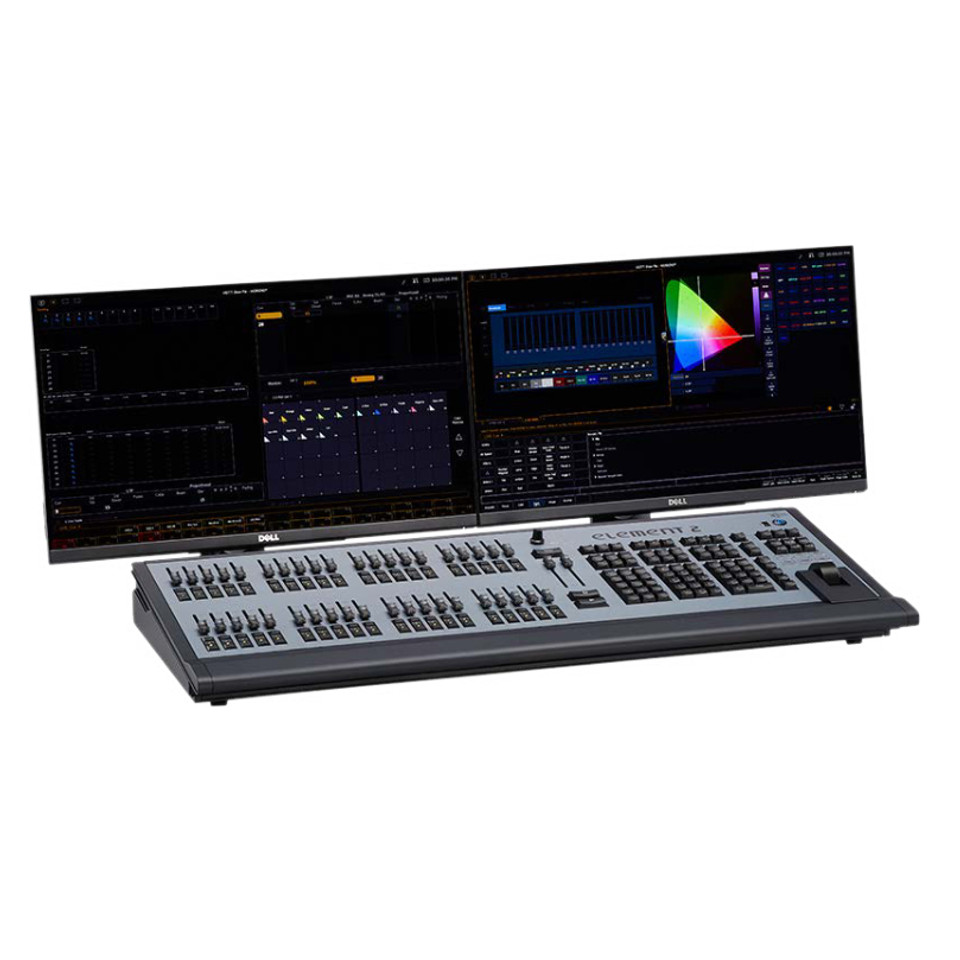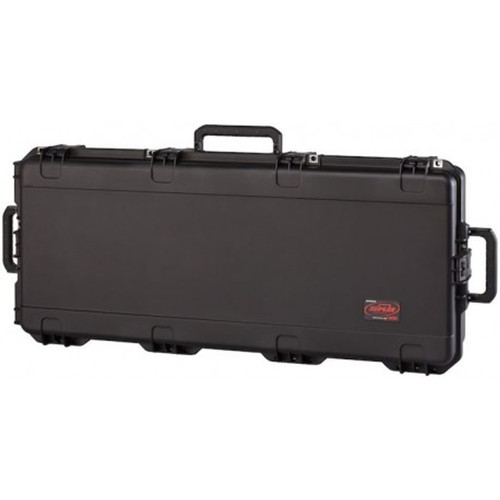Overview
Designed for venues using primarily conventional lighting, the Element 2 control console provides the powerful features of the Eos system in an economical and simplified package. In addition to keypad commands, true LTP Channel Faders provide hands-on control of intensity and can be used to set manual levels and edit recorded cues and submasters. Virtual moving light controls are available to facilitate the use of conventional accessories like moving mirror heads, color scrollers or gobo rotators, or to make controlling small numbers of moving lights simple and direct. Element 2 can be backed up by another Element 2, ETCnomad 6,144 or ETC Puck 6,144 mini-computer.
Eos Family software includes:
- Approachable yet powerful syntax for programmers of every level
- Industry-leading color control tools
- Magic Sheets for custom programming and displays
- Augment3d 3D programming and visualization environment
- Virtual Media Server function for pixel-mapping
- Timecode and automation integration
Features
- Supports two external display port monitors (1920x1080 minimum, 3840x2160 maximum), with optional single-touch or multi-touch screen control and DDC/CI support
- 40 45mm standard faders, 100 10-fader pages configurable as channels, submasters, palettes/presets, timing and effect rate/speed playback control
- Dedicated fader paging knob, with backlit selection labels
- Main Playback with two 45mm standard faders
- On-Demand moving light and LED virtual encoders on connected display monitor
- Dedicated high-resolution intensity level wheel
- Eos keypad
- Included USB keyboard
- Solid-state hard drive
- IEC power input (100-240 VAC at 50/60Hz), fused mains power switch, locking regionalized power cable included
- Two individually configurable Gigabit Ethernet ports, RJ45 connectors
- One 802.11ac WiFi Ethernet adapter (to be enabled with future software)
- Bluetooth 5.1 for connecting input accessories (to be enabled with future software)
- sACN and Art-Net network output protocols
- Four DMX-512 / RDM 5-pin XLR ports
- Contact closure triggers via D-Sub connector
- USB 3.1 ports, for flash drives, pointing devices, keyboards (5 USB-A ports, 2 USB-C ports)
- One Littlite XLR port
- One Kensington lock port
- Multiple MIDI and/or SMPTE timecode inputs, MIDI In and Out, Analog/Serial Inputs, OSC transmit/receive, UDP transmit/receive through network interface or Response Gateways









